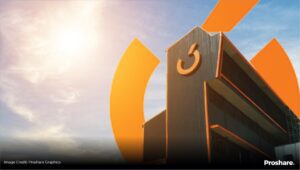FG unveils technology to tackle fuel tanker explosions
By Uthman Salami
The National Oil Spills Detection and Response Agency (NOSDRA) has disclosed that it will be making oil tankers to install anti-explosive technology in their vehicles to prevent explosion during accident.
This disclosure was made by the Chairman of NOSDRA Governing Board, Mr. Lancelot Anyanya, during an exclusive interview with Nigerian NewsDirect.
He explained that the new technology will stem down the incessant explosions caused by tankers accident which he describes as being deadlier and more intense than the fire itself.
He revealed that the Board is already working in tandem with the critical stakeholders such as IPMAN, MOMAN, DAPMAN and in the downstream sector as well as others to ensure that there are proper sensitization with regards to the requirements and usage of the latest technology.
He further said that there have been “meetings to sensitize them further and to let them have solutions to some of these tankers’ accidents that explode. We also got in touch with a private company that has technology that can prevent explosion.”
He added that they “have brought the company into this. We held meetings with these three groups (Unions) together with the company that made the technology that can prevent explosion.”
Explaining further, the Chairman bemoaned the danger underlying tankers’ explosions which he said does more havoc to the people and the environment.
He said, “You know when a tanker falls, in the process of burning, there is explosion. The explosion does more damage than the fire itself because when it explodes, it goes wider, more intense and more hazardous.”
He said the board “have met with them just last week. We have held a meeting with all these stakeholders; DAPMA, IPMAN, MOMAN, as well as FRSC, FFS. This company that Manufactures the technology will begin to teach them one after the other to further teach them the particulars how to acquire this technology so that whenever they have any fire incident at all, explosion coming from that is already safeguarded.”
“What they can do will be to see how they can quench and extinguish the fire as quickly as possible. This will go along way in making a kind of hazard we have very much reduced,” he added.
Explaining further, he said the board was going “to ensure that FRSC are fully engaged because they deal with people and the environment. If all these tankers are compelled by regulation to insert this technology inside their tankers, even when it falls,” he said the impact will be minimal.
He further explained that some of the tankers being used to ply on the roads are too over-stretched and overloaded with litres of oil they are not capacitated to carry.
This, he said, is another contributory factor to tanker accidents on major roads.
He explained that the Board had observed that “the capacity of the tankers had increased further than what it used to be. Before now, a tanker could be carrying about 13,000 to 30,000 litres of petroleum products.”
He said the story has changed today as oil tankers “could be carrying between 45,000 to 60,000 thousands litres of petroleum products on our roads.They end up doing three things; they damage our roads, if any accident happen, there is more likelihood of more damage to the environment and loss life and properties.”
He revealed that “the vehicles themselves; the tractors pulling the tankers, are not as strong as they should be. That is why, if you notice, in Lagos at a place called Otedola bridge, is a sloppy area. When a Tanker is loaded with a 60,000 litres of petroleum products and moving down the hill. Because of the heavy load that it’s pulling, it makes them to lose control most of the times. And when they lose control, they drop.
“Once the tankers fall down, they catch fire and explode. Where they succeed to move down the slope, in the cause of moving up, some of them are not as strong enough to continue to be pulling the same load up the hill.
“When they find it difficult, they reverse. These are the roads that are plied by many motorists with different categories of vehicles. When a car fails to move up the hills and suddenly reverses, whatever it meets on the road will be jammed.”
He added that both the Board and the FRSC is worried about it. And they are working harmoniously by “linking up to see how we can jointly do our bit in order to achieve the mandate of safe driving and a safe environment.”
While responding to when this technological device will be implemented, he said a lot of sensitization had to be put in place before proper implementation.
“The implementation is going to be such that once these private companies go round, we will give them some time to holistically look at their budgets. This is something that should be done as quickly as possible, so that they can reduce the amount of risk,” he concluded.




